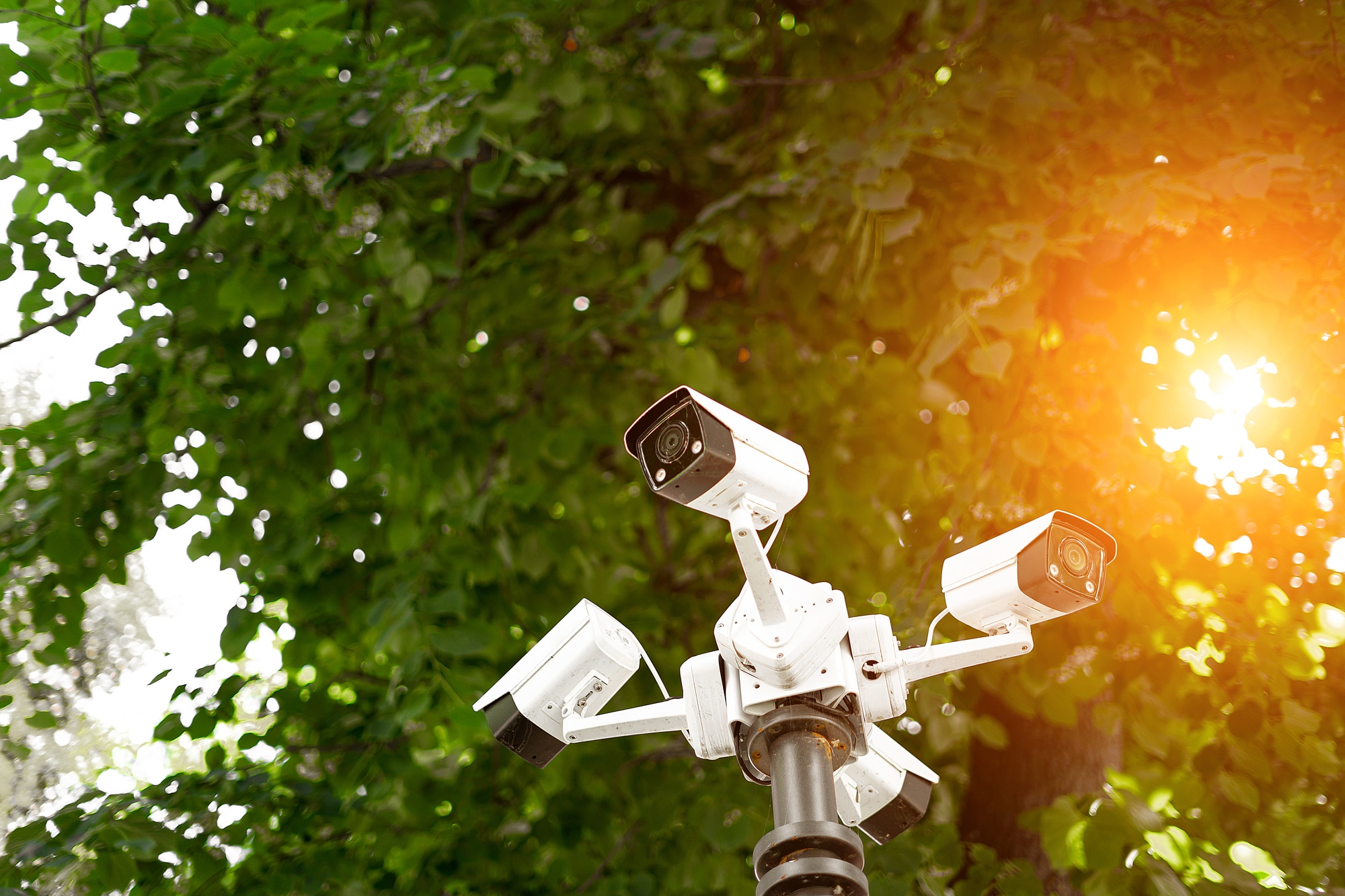
The realm of video surveillance is not just a matter of installing cameras and recording footage. It is a landscape marked by a complex mesh of legal considerations that every business owner must navigate carefully. In the United States, laws regarding video surveillance vary greatly—not only are there federal statutes to consider, but state and local laws can have their own specific requirements and restrictions.
This blog post is designed to be your compass in the vast legal wilderness of video surveillance. We’ll explore the overarching federal laws that govern the use of cameras, delve into the patchwork of state-by-state variations, and offer guidance on maintaining a lawful balance between surveillance and privacy rights. From understanding the boundaries of workplace monitoring to the nuances of customer-facing surveillance, we will provide the insights you need to operate your business’s surveillance legally and ethically.
Join us as we illuminate the path to compliance, ensuring that your security measures reinforce safety without breaching privacy or legality. It’s not just about protecting your premises but upholding the law and respecting the rights of individuals under your watchful cameras. Let’s embark on this journey together, ensuring that your vigilance is as lawful as it is vigilant.
The Essentials of Video Surveillance Laws
Video surveillance is a critical component of modern business security, but it’s governed by a framework of laws that can be as intricate as the wiring of the cameras themselves. At the federal level, the main piece of legislation that business owners should be familiar with is the Electronic Communications Privacy Act (ECPA) of 1986. This law, among other things, prohibits the interception of private communications. However, it also provides exceptions that allow video surveillance in many business scenarios, as long as it does not capture audio without consent.
Understanding the concept of a “reasonable expectation of privacy” is also essential. This legal principle dictates that video surveillance should not be conducted in places where individuals expect privacy. For businesses, this typically means that cameras may be placed in public areas like sales floors or reception areas, but not in private spaces such as bathrooms, locker rooms, or personal offices without clear consent from individuals using those spaces.
The ECPA and the expectation of privacy provide the broad strokes of legal surveillance, but they are just the starting point. They set a baseline for lawful monitoring, ensuring that businesses do not inadvertently engage in what could be considered electronic eavesdropping. These federal guidelines are intended to protect individuals’ privacy rights while still allowing businesses to secure their operations.
However, the law also recognizes the legitimate needs of businesses to monitor their premises for security purposes. Therefore, video surveillance is often seen as
a permissible practice, provided it adheres to certain standards and practices. For instance, it’s generally acceptable to record video in common areas where there’s no reasonable expectation of privacy, like shop floors, parking lots, or lobbies. This is because these areas are considered public, and individuals inherently understand that they might be observed in these spaces.
On the other hand, surveillance in areas where privacy is expected requires a more nuanced approach. If there is a justifiable reason to monitor these areas, it is imperative to obtain consent from people who use them. This is often achieved through clear and conspicuous signage that informs individuals they are entering a monitored area. This signage not only serves as a deterrent for wrongful conduct but also as a legal safeguard for the business.
Moreover, if video surveillance is to be used in the workplace, it’s a best practice to inform employees about the monitoring policies. This is usually done through employee handbooks or specific surveillance policies that outline the scope and purpose of the monitoring. Transparency with employees not only helps with legal compliance but can also foster a culture of trust in the workplace.
In essence, federal laws like the ECPA set the stage for legal video surveillance by balancing the needs of businesses to protect their interests with the privacy rights of individuals. As we move forward, it’s important to remember that while these laws create a general framework, they are just the foundation upon which more specific state and local regulations are built. As a business owner, it’s crucial to be aware of and comply with all levels of laws to ensure that your surveillance practices are above board.
State-by-State Variations in Surveillance Laws
While federal laws provide a general guideline for video surveillance, the specifics can vary significantly from one state to another. This patchwork of regulations may seem daunting, but understanding your state’s particular laws is crucial to operating within legal bounds.
For instance, some states have stringent laws regarding audio recording, requiring all parties being recorded to consent, known as “two-party consent” laws. In contrast, other states operate under a “one-party consent” system, where only one person involved in the conversation needs to be aware of the recording. This distinction is particularly important if your surveillance system has the capability to record audio.
In addition to audio recording rules, some states have specific regulations about where cameras can be placed, even in public areas. For example, certain states may have laws that prohibit video surveillance in places where individuals are likely to have sensitive personal interactions, even if those places are not traditionally considered private.
Another area of state-specific legislation is the handling and storage of recorded footage. Some states require businesses to register their surveillance systems with local law enforcement or adhere to strict data storage and protection protocols. These laws aim to protect the privacy of individuals captured on camera and ensure that surveillance footage is not misused.
It’s also important to note that some states have passed laws that directly address the use of surveillance cameras in specific settings like schools, healthcare facilities, or government buildings. These laws may impose additional requirements or restrictions based on the particular sensitivities associated with these environments.
For businesses that operate in multiple states, the challenge is to create a surveillance policy that meets the highest standard of compliance across all locations. This may involve adopting the most stringent regulations as a baseline for your company’s surveillance practices.
To navigate this complex terrain effectively, it’s recommended that business owners conduct thorough research or consult with legal experts who specialize in privacy laws in each state where they operate. Here are a few steps to consider:
- Legal Consultation: Engage with a lawyer to understand the specific legal requirements of each state where your business has a presence.
- Policy Review: Regularly review and update your surveillance policies to reflect changes in the law and ensure compliance across all locations.
- Employee Training: Educate your employees, especially those who handle surveillance equipment and footage, about the varying laws and the importance of adherence.
- Public Notification: Clearly notify both employees and the public about the presence of surveillance cameras where required, using signage that complies with state regulations.
- Data Management: Implement strict data management policies that align with state laws regarding footage storage, access, and destruction timelines.
By staying informed about state-specific laws and diligently applying them to your business practices, you can ensure that your use of video surveillance is legally sound while continuing to protect your property, employees, and customers. This proactive approach not only safeguards your business against legal challenges but also reinforces your reputation as a responsible and privacy-conscious organization.
Workplace Surveillance and Employee Privacy

Incorporating video surveillance within a business setting requires a delicate balance between ensuring security and respecting employee privacy. The workplace is an area where the interests of employers in safeguarding their operations can intersect with the privacy expectations of their employees.
- Understanding Consent and Notification in the Workplace Consent is a cornerstone of legally compliant workplace surveillance. In many jurisdictions, employers are required to inform their employees about monitoring practices. This can often be done through clear and visible signage that alerts employees to the presence of cameras, or through written notices, such as in an employee handbook or contracts.
- The Impact of Surveillance on Employee Relations While the legal aspects are vital, the human element should not be overlooked. Surveillance can impact the trust and morale of employees if not managed with transparency and clear communication. Employees are likely to be more accepting of surveillance if they understand its purpose and if it’s implemented in a way that respects their dignity and personal space.
- Navigating Privacy in Sensitive Areas Surveillance in areas such as break rooms or locker areas can be particularly sensitive and may not be allowed without explicit consent. Even in areas where surveillance is permitted, such as production floors or retail spaces, it is critical to avoid practices that could be seen as invasive, like monitoring employees during their breaks or other personal activities.
- The Legal Repercussions of Overstepping Boundaries If businesses fail to adhere to legal requirements regarding workplace surveillance, they may face legal repercussions, including fines, lawsuits, and damage to their reputation. Ensuring compliance is not only a legal obligation but a form of risk management.
For businesses, the key is to use surveillance judiciously and to create a clear policy that outlines how and why surveillance is used. Such policies should address the following:
- Placement of Cameras: Be strategic and thoughtful about where cameras are placed, avoiding private areas to respect employee privacy.
- Purpose of Monitoring: Define the specific reasons for surveillance, such as security, theft prevention, or safety, and communicate these reasons to employees.
- Access to Footage: Limit who has access to surveillance footage and under what circumstances it may be reviewed.
- Retention of Footage: Establish guidelines for how long footage is retained and the secure process for its deletion to ensure personal information is not kept longer than necessary.
In creating a surveillance policy, it’s crucial to strike a balance that protects the business’s interests without infringing on employee privacy. Here are some actionable points:
- Policy Development: Develop a comprehensive surveillance policy that is regularly reviewed and updated to reflect current laws and technologies.
- Employee Education: Clearly educate employees on the extent of surveillance and the rationale behind it. This can help mitigate concerns and foster a culture of mutual trust and understanding.
- Consistent Application: Apply the surveillance policy consistently across all departments and roles to avoid perceptions of unfairness or targeting.
- Feedback Mechanism: Provide a channel for employees to express concerns or feedback about the surveillance practices.
By thoughtfully implementing surveillance practices with consideration for legal and ethical boundaries, businesses can create a secure, productive, and respectful work environment. This proactive approach to balancing security needs with employee privacy rights is not only good legal practice but also good business practice.
Video Surveillance in Customer-Facing Areas
Implementing video surveillance in areas frequented by customers introduces another layer of legal and ethical consideration. While surveillance can enhance safety and prevent theft, it is crucial to respect customers’ privacy and adhere to legal standards.
- Legal Requirements for Surveillance in Public Spaces When it comes to customer areas, such as retail floors or dining spaces, the law typically permits video surveillance. However, businesses must be mindful of any state-specific consent and notification requirements. For instance, placing clear and visible signs that inform customers about the surveillance can be a legal requirement and also serves to maintain transparency, which can foster trust with your clientele.
- The Balance Between Security and Privacy The goal of video surveillance in these spaces is to provide security for both the customers and the business. It should not infringe upon the personal privacy of individuals. Surveillance should be used to monitor for safety issues or theft, not to gather personal information beyond what is necessary for security purposes.
- Audio Recording Considerations If the surveillance system includes audio recording, this often brings additional legal considerations. Many jurisdictions have more stringent laws regarding audio surveillance compared to video, typically requiring dual-party consent. Therefore, it is often safer, from a legal standpoint, to disable audio recording in customer-facing areas.
- Data Handling and Customer Rights Customers have rights regarding their personal data, which includes video recordings. It’s essential to have policies and procedures in place that address how long footage is stored, who has access to it, and how it is protected. Ensuring that these policies are compliant with data protection laws, such as the General Data Protection Regulation (GDPR) for European customers or state-specific privacy laws like the California Consumer Privacy Act (CCPA), is critical.
- Creating a Safe Environment for All Ultimately, the use of video surveillance in customer-facing areas should contribute to creating a safe and welcoming environment. This includes using surveillance footage responsibly and ensuring that customers feel comfortable with the presence of cameras.
By carefully considering the placement and use of cameras, businesses can protect their assets and provide a secure space for customers without compromising on privacy and trust. It’s important for businesses to regularly review their surveillance strategies and legal obligations to adapt to any changes in the legal landscape or customer expectations.
In summary, while surveillance in customer-facing areas is generally acceptable and can be beneficial for security purposes, it must be done with consideration for the legal implications and the potential impact on customer relationships. Clear communication, proper signage, and a strict adherence to legal requirements are the cornerstones of a responsible surveillance strategy in public spaces.
Data Storage and Access: Legal Considerations
Once a business captures video footage, the responsibility doesn’t end there. The storage and handling of this data come with its own set of legal obligations that must be carefully managed.
- Storage Duration and Security The length of time surveillance footage is stored can vary depending on state laws or specific industry regulations. Some jurisdictions may require retaining footage for a minimum amount of time, while others may impose restrictions on the maximum retention period to protect individuals’ privacy. Secure storage is also paramount to prevent unauthorized access or breaches, which can have serious legal repercussions.
- Access to Surveillance Footage Typically, access to surveillance footage should be limited to authorized personnel only. This minimizes the risk of privacy violations and data misuse. Furthermore, if third parties, such as law enforcement, request access to footage, businesses must navigate these requests with an understanding of the legal standards for compliance and the protection of individual rights.
- Data Protection Compliance Businesses must also be mindful of broader data protection laws that apply to any collected personal data, which can include video footage. Compliance with regulations such as GDPR or CCPA involves ensuring that data is not only stored securely but also handled in ways that respect individuals’ privacy rights.
Implementing strict data management policies is not only a legal safeguard but also an aspect of ethical business practice. Ensuring the confidentiality and integrity of surveillance data protects both the business and the individuals captured on camera.
In conclusion
, the legal landscape of video data storage and access requires a robust understanding and application of various privacy laws. For businesses, this means:
- Implementing Strong Data Security Measures: Utilizing encryption, secure servers, and regular security audits to protect footage from unauthorized access or leaks.
- Developing Clear Data Access Policies: Outlining who has access to the footage, under what circumstances, and the protocols for handling requests from outside entities.
- Maintaining Compliance with Data Privacy Laws: Staying informed and compliant with evolving data protection regulations to safeguard individual rights and avoid legal penalties.
By proactively establishing and adhering to stringent data management protocols, businesses can ensure they responsibly steward the surveillance footage they collect and maintain trust with their employees, customers, and the public.
Legal Best Practices for Implementing Video Surveillance
When implementing video surveillance, businesses must navigate a complex legal environment. To do this effectively, they should adopt best practices that not only adhere to the letter of the law but also foster trust and transparency.
- Conduct a Legal Audit: Regularly review surveillance practices with legal counsel to ensure they comply with all applicable laws and regulations.
- Create a Surveillance Policy: Develop a comprehensive policy that covers the purpose of surveillance, camera placement, data storage, and access. This policy should be readily available to employees and, where appropriate, to customers.
- Train Employees: All employees should be aware of the surveillance policies, understand the legalities involved, and know the protocols for accessing and handling footage.
- Update and Inform: Keep surveillance practices up to date with the latest legal requirements and inform all stakeholders of any changes to these practices.
- Use Signage: Display clear signage to inform employees and customers about the presence of surveillance cameras.
- Respect Privacy: Install cameras in a way that respects privacy, avoiding private areas such as restrooms and locker rooms unless there is a compelling legal reason to do so.
- Secure Data: Implement and maintain robust security measures to protect stored footage from unauthorized access or breaches.
By following these best practices, businesses can leverage video surveillance effectively while respecting
the privacy of individuals and complying with legal standards.
Final Thoughts
 Navigating the legal landscape of video surveillance is essential for modern businesses. It is not only about protecting assets but also about respecting the rights of employees and customers, and adhering to a complex array of laws and regulations. As a business owner, it’s crucial to stay informed, consult with legal experts, and implement surveillance with caution and care.
Navigating the legal landscape of video surveillance is essential for modern businesses. It is not only about protecting assets but also about respecting the rights of employees and customers, and adhering to a complex array of laws and regulations. As a business owner, it’s crucial to stay informed, consult with legal experts, and implement surveillance with caution and care.
The use of surveillance technology should be driven by clear, legitimate business needs, and it should always be balanced with ethical considerations and legal requirements. By following best practices and remaining vigilant about legal obligations, businesses can ensure that their use of video surveillance is both effective and lawful.
In an era where technology is advancing rapidly, the importance of maintaining privacy and compliance cannot be overstated. Business owners have the opportunity to set a standard for responsible surveillance that protects everyone’s interests. By doing so, they not only safeguard their operations but also build trust and integrity within their business practices.
Remember, when it comes to video surveillance, the clarity of your legal understanding can be as crucial as the clarity of the footage you capture. Stay informed, stay compliant, and ensure that your surveillance systems serve the security and the rights of all.
Contact us today to discuss any of your video surveillance questions or needs!




